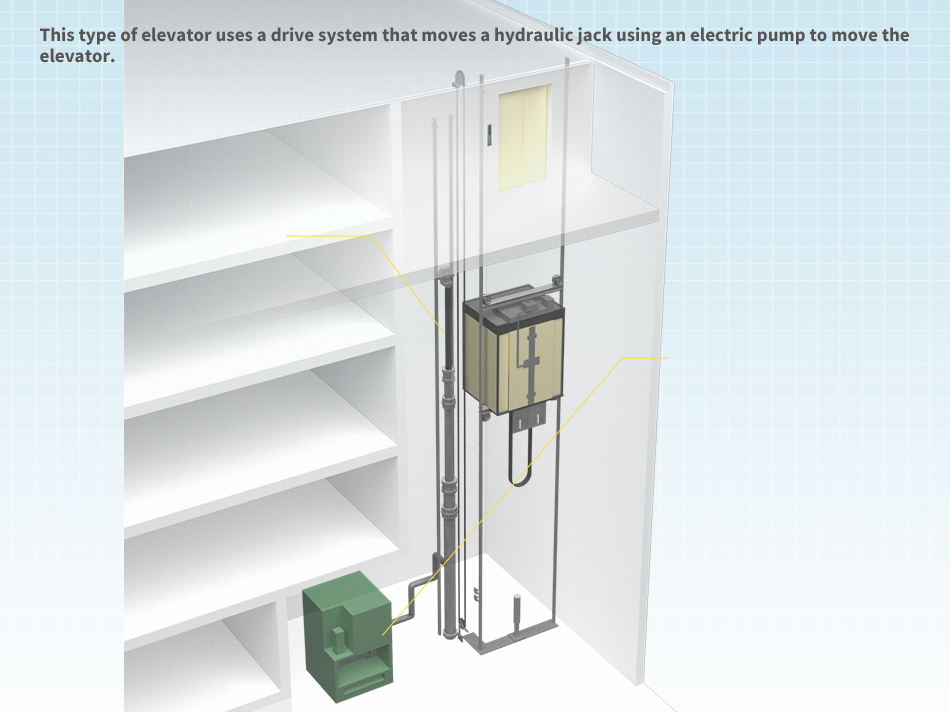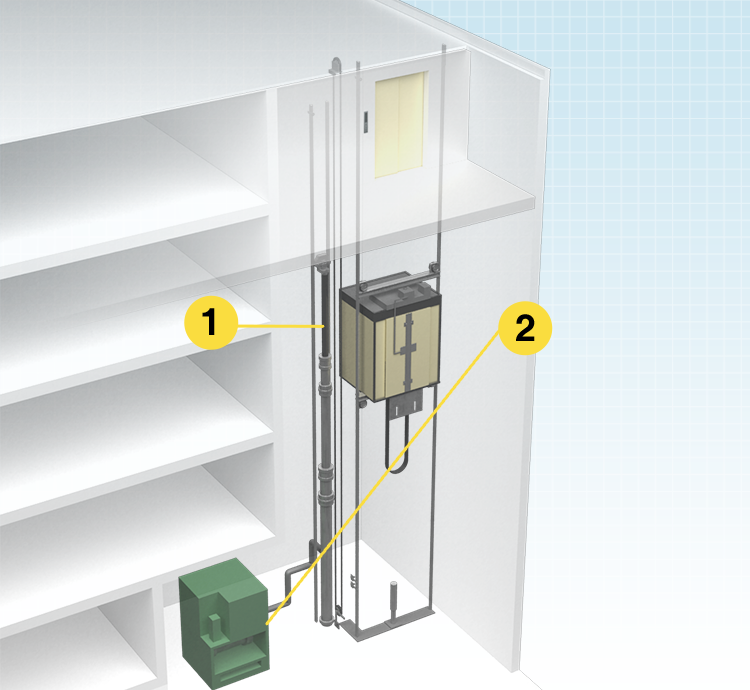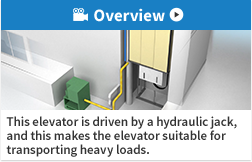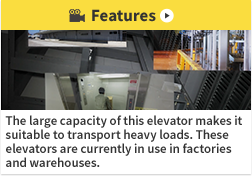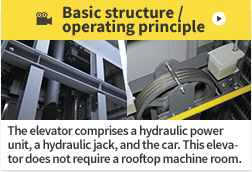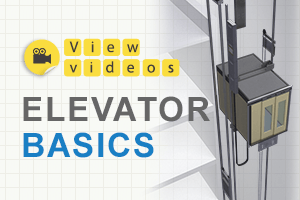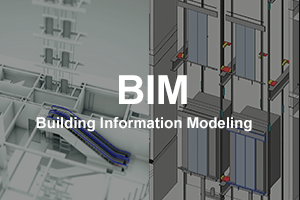Elevator BasicsHydraulic Elevators
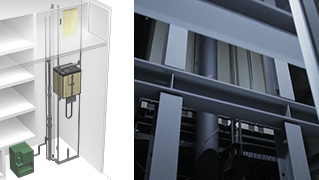
A hydraulic elevator is driven through the use of an electric pump to move a hydraulic jack.
The large capacity of the elevator makes it suitable for transporting heavy loads.
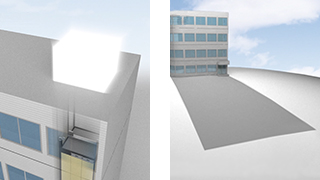
Prior to the arrival of machine-room-less elevators, the height restrictions and sun shadow regulations, among other factors, meant that consideration had to be paid to the actual building, and hydraulic elevators were used when there were limitations, like not being able to load heavy equipment.
These elevators have a high capacity and are suitable for transporting heavy loads, thus, they currently operate in factories and warehouses. However, due to their structure they are almost always used in low-rise buildings.
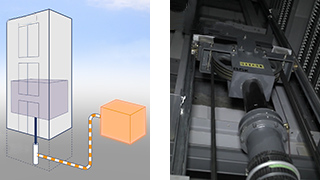
There are two types of drive systems for these elevators: the direct type, where a plunger that extends or retracts through hydraulic pressure directly connects to a car to make it ascend or descend; and the indirect type, where the extending or retracting of the plunger pulls a rope that makes the car ascend or descend. The majority of the hydraulic elevators delivered in Japan are of the indirect type.
The equipment includes the hydraulic power unit, hydraulic jack and car. The installation of the hydraulic power unit can be performed in a relatively abundant form of layouts, and there is no need for a rooftop machine room.



